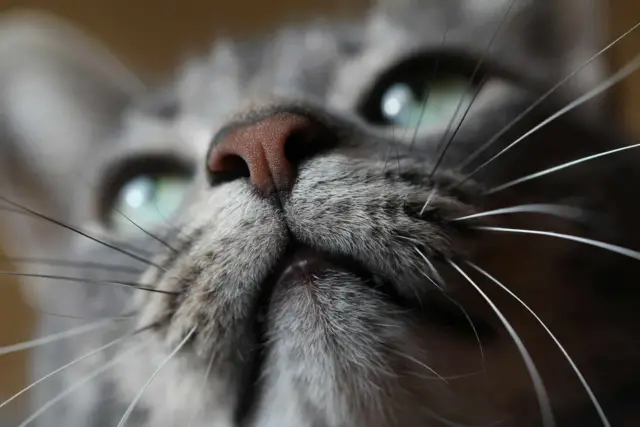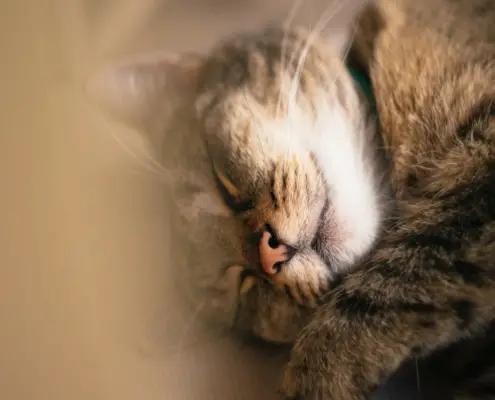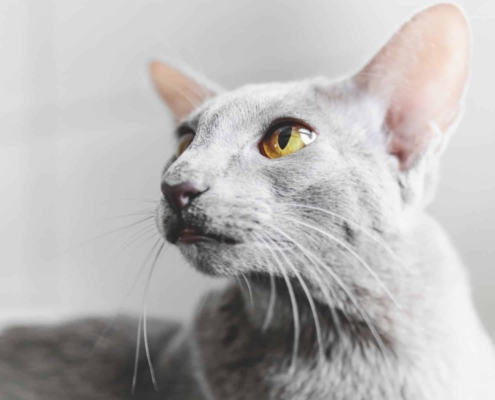
Cats are fascinating creatures with highly developed senses, and one sense that particularly stands out is their sense of smell. Cats rely on their olfactory system to navigate the world around them, and their sense of smell is far more advanced than that of humans. This article aims to delve into the science behind why cats have such a strong aversion to citrus scents.
The unique olfactory system of cats
To understand why cats dislike citrus scents, it’s essential to first explore their unique olfactory system. Cats have a specialized organ called the vomeronasal organ, also known as Jacobson’s organ. This organ is located in the roof of their mouths and is responsible for detecting pheromones and other chemical signals in the environment.
The vomeronasal organ allows cats to analyze scents in a way that humans cannot comprehend. It helps them communicate, identify potential mates, and detect prey. This heightened sense of smell also means that cats are more sensitive to certain odors, including citrus scents.
The evolutionary reasons behind cats’ dislike of citrus scents
Cats’ aversion to citrus scents can be traced back to their evolutionary history. In the wild, cats have a keen sense of self-preservation, which includes avoiding potential dangers. Citrus fruits, such as oranges and lemons, contain chemical compounds that are often associated with bitter tastes and can be toxic to cats in large quantities.
Over time, cats have developed an instinctual dislike for citrus scents as a way to protect themselves from potential harm. This aversion is a result of their innate survival instincts and is deeply ingrained in their genetic makeup.
The chemical compounds in citrus fruits that cats find repulsive
The specific chemical compounds in citrus fruits that cats find repulsive are limonene and linalool. Limonene is a naturally occurring compound found in the peels of citrus fruits and is often used in cleaning products and air fresheners due to its pleasant scent. However, cats are highly sensitive to limonene and can perceive it as overwhelming and unpleasant.
Linalool is another compound found in citrus fruits, as well as in various plants such as lavender and mint. While linalool may be pleasant to humans, it can cause adverse reactions in cats, including respiratory distress and even allergic reactions.
Other scents that cats dislike and why
While citrus scents are known to be particularly disliked by cats, there are other scents that cats also tend to avoid. These scents include eucalyptus, mint, and certain essential oils like tea tree and peppermint. Cats have a different set of scent preferences compared to humans, and these scents can be overwhelming and overpowering to them.
The reason behind cats’ dislike for these scents lies in their chemical composition. Many of these scents contain compounds that are irritating to cats’ sensitive respiratory systems. Additionally, some scents may remind cats of predators or other dangers, triggering an instinctual aversion response.
How to use citrus scents to deter cats from unwanted areas
If you’re a cat owner looking to deter your furry friend from certain areas of your home, citrus scents can be a useful tool. Cats naturally dislike the smell of citrus, so utilizing citrus-scented products can help discourage them from venturing into unwanted areas.
One simple way to use citrus scents is by placing citrus peels or spraying citrus-scented air fresheners in the desired areas. However, it’s important to note that while cats generally dislike citrus, individual preferences can vary. Some cats may be less bothered by citrus scents than others, so it may take some trial and error to find the most effective method for your particular cat.
Alternatives to citrus scents for cat repellent
While citrus scents can be effective in deterring cats, there are alternative options for cat repellent that can be equally as useful. Some cats may not be as responsive to citrus scents, so it’s worth exploring other options.
One alternative is the use of lavender or eucalyptus scents, which cats also tend to avoid. These scents can be found in essential oils or as part of commercially available cat repellent sprays. However, it’s important to remember that not all cats will have the same aversion to these scents, so it’s essential to test their effectiveness before relying on them as a sole deterrent.
The importance of understanding cats’ preferences and aversions
Understanding cats’ preferences and aversions is crucial for their well-being and for maintaining a harmonious coexistence with them. Cats are individuals with unique personalities, and what may work for one cat may not work for another. By recognizing and respecting their likes and dislikes, we can create a safe and comfortable environment for our feline companions.
It’s also important to note that while certain scents may deter cats from specific areas, it’s crucial to provide alternative options and enrichment for them. Cats have a need for exploration and stimulation, so it’s essential to strike a balance between creating boundaries and providing an enriching environment.
Tips for introducing new scents to cats
Introducing new scents to cats can be a gradual and rewarding process. Here are some tips to help make the experience positive for both you and your feline friend:
- Start slowly: Begin by introducing small amounts of the scent in a controlled environment. This allows your cat to become familiar with the scent without feeling overwhelmed.
- Positive reinforcement: Associate the new scent with positive experiences for your cat. Offer treats or playtime in the presence of the scent to create positive associations.
- Observe your cat’s reactions: Pay close attention to your cat’s body language and behavior when exposed to the new scent. If they display signs of distress or discomfort, it may be necessary to discontinue the introduction.
- Gradually increase exposure: Once your cat shows positive responses to the new scent, gradually increase their exposure to it. This can be done by placing scented items in different areas of your home.
Remember, every cat is unique, and their response to new scents may vary. Patience, consistency, and observing your cat’s comfort levels are key to successful scent introductions.
Embracing cats’ individuality and preferences
In conclusion, cats’ aversion to citrus scents can be attributed to their unique olfactory system and evolutionary history. The chemical compounds found in citrus fruits, such as limonene and linalool, trigger a negative response in cats due to their heightened sensitivity.
While citrus scents can be used as a deterrent, it’s important to remember that cats have individual preferences and may not all react the same way. Understanding and respecting cats’ likes and dislikes is crucial for their well-being and for maintaining a positive relationship with them.
By embracing cats’ individuality and preferences, we can create a harmonious environment that takes into account their unique sensory experiences. So, the next time you see your cat turn its nose up at a citrus scent, remember that it’s simply their way of expressing their preferences and aversions.
If you enjoyed my article, I would appreciate you sharing it with your network.

Sima Ndlebe
Sima writes for CatBuzz. He is interested in Cats, Health and Fitness, and Entrepreneurship.
Published: 18 May 2024



